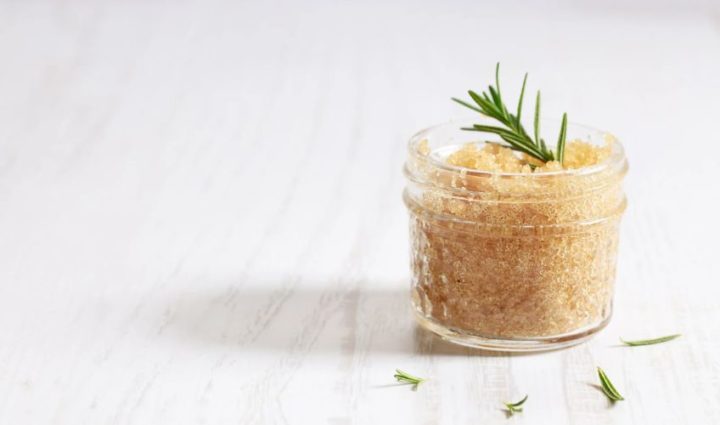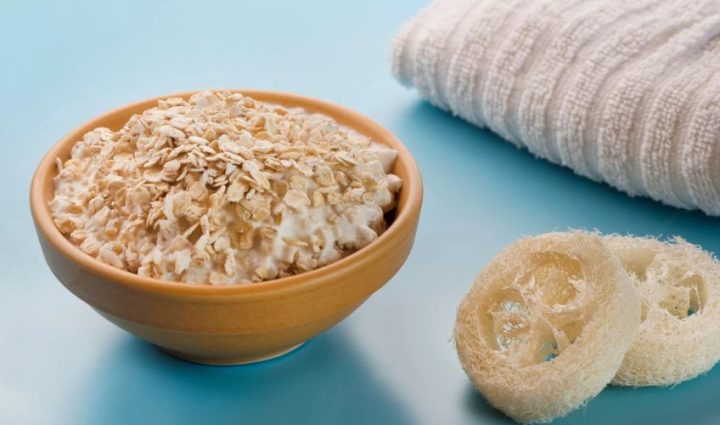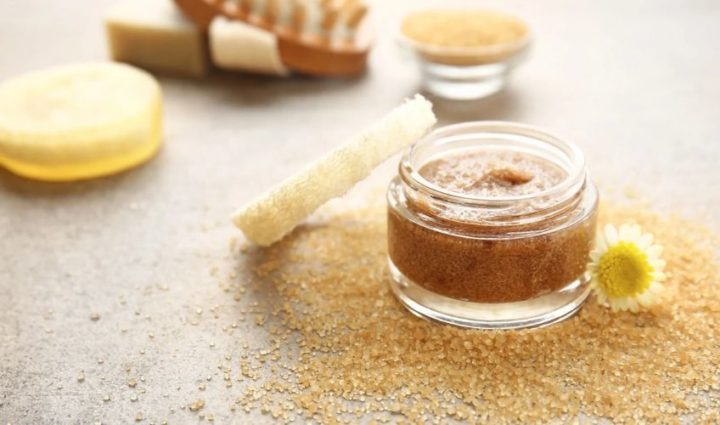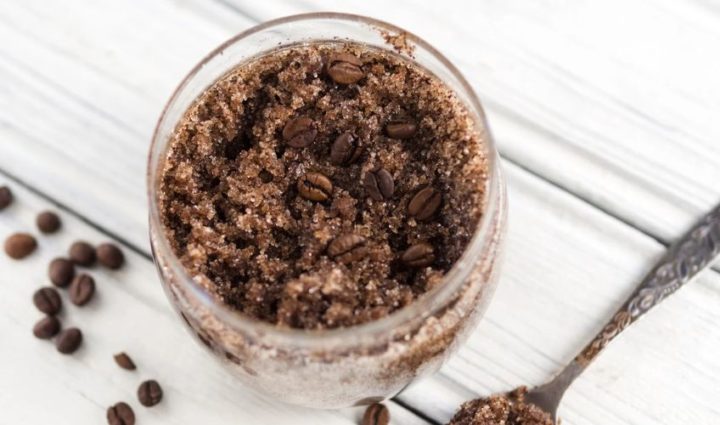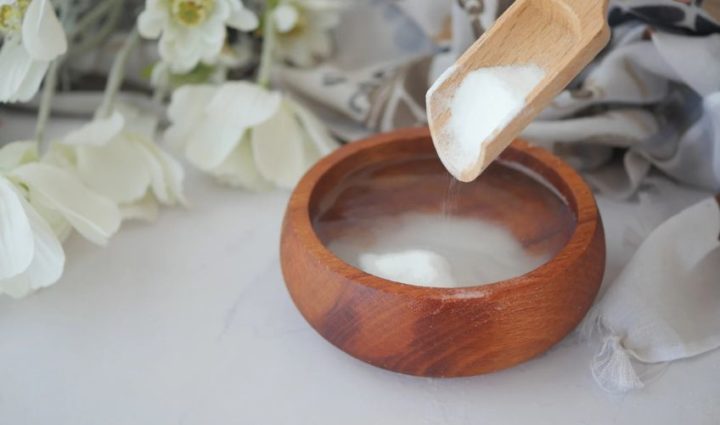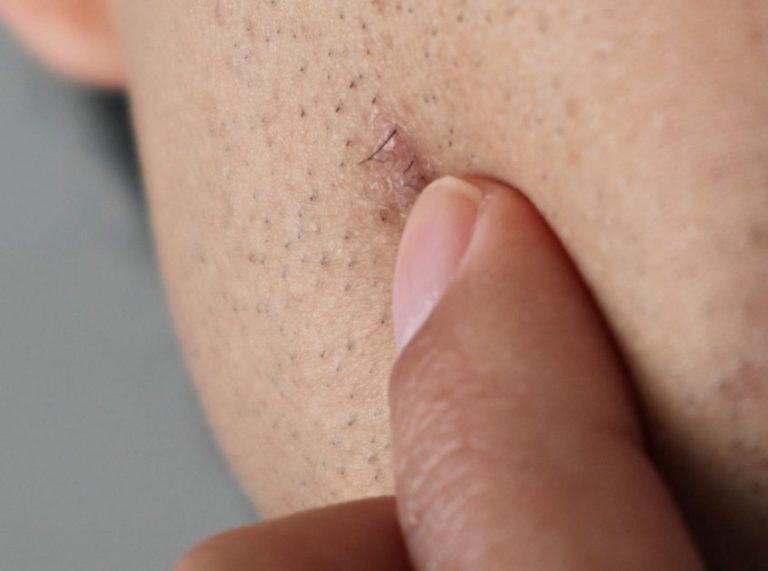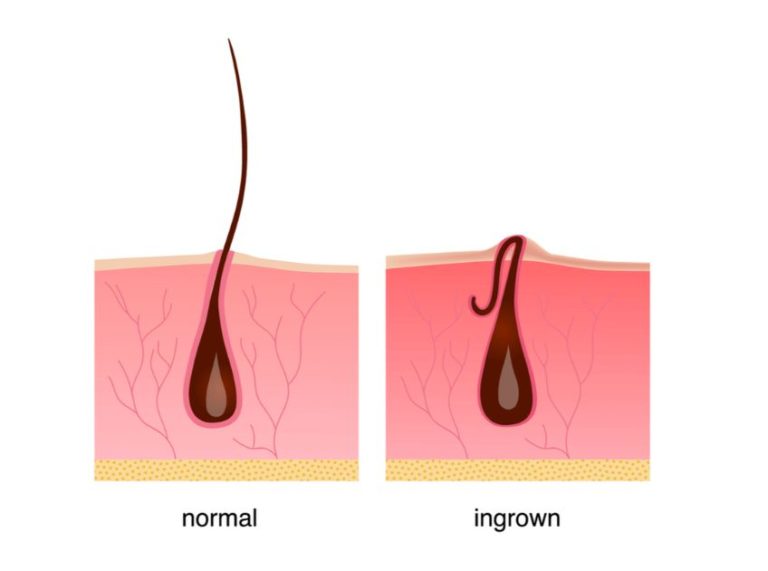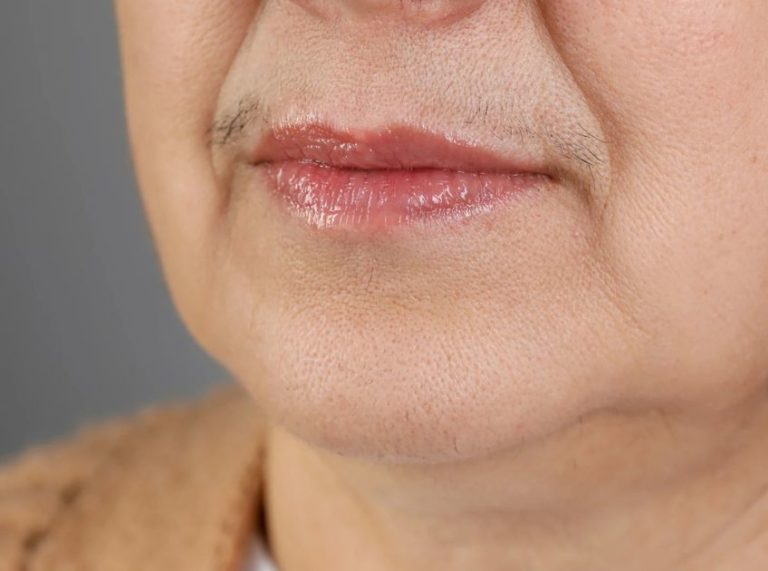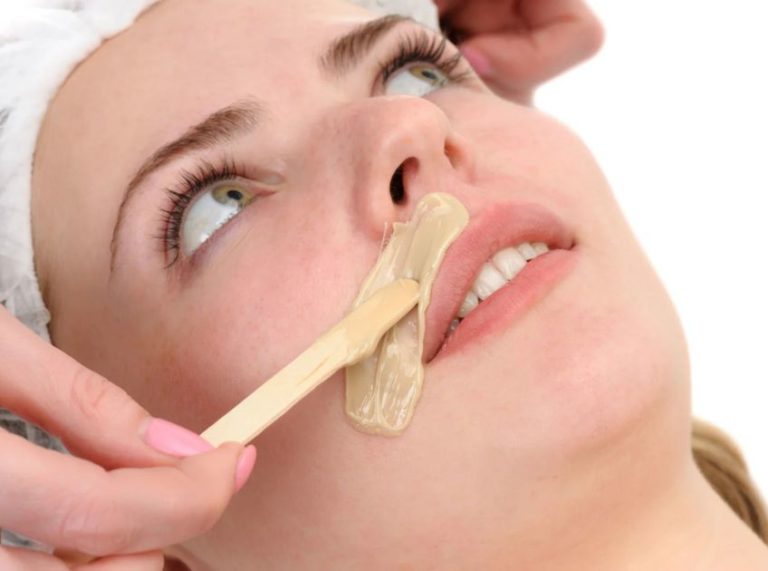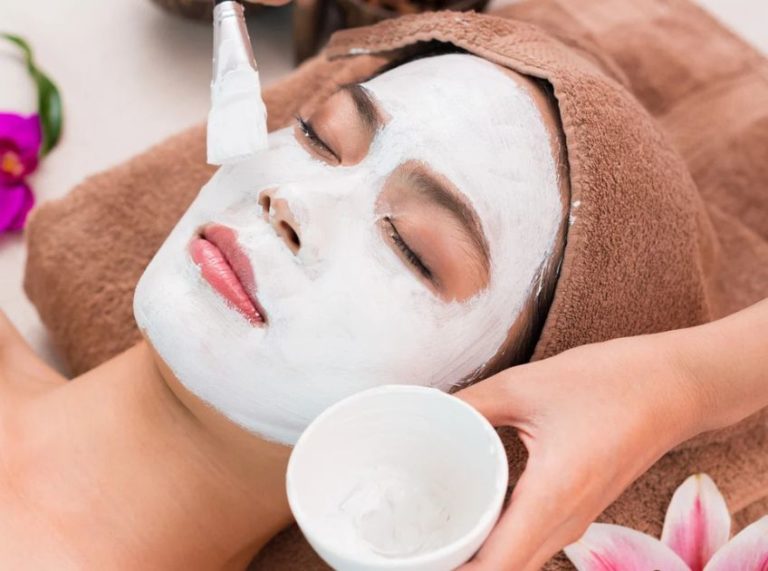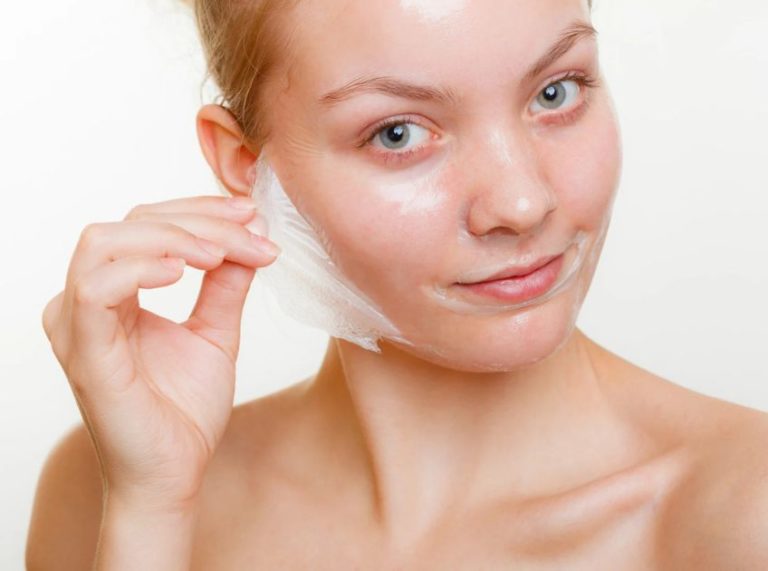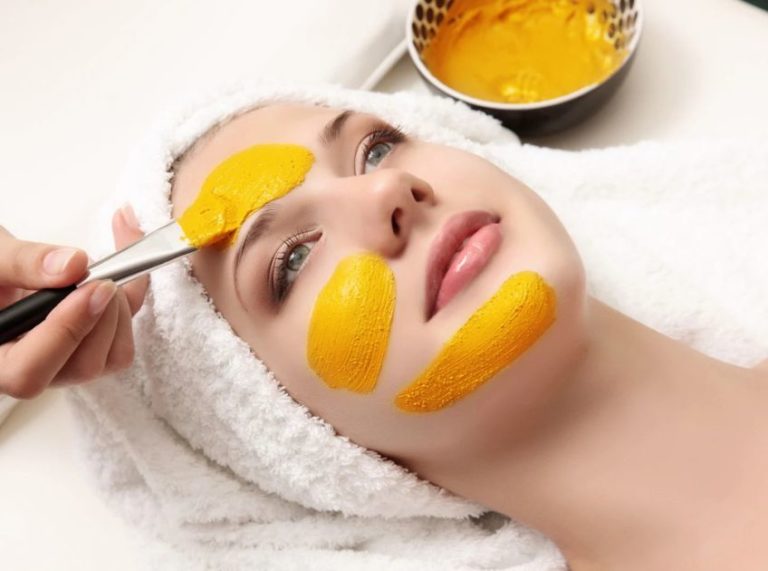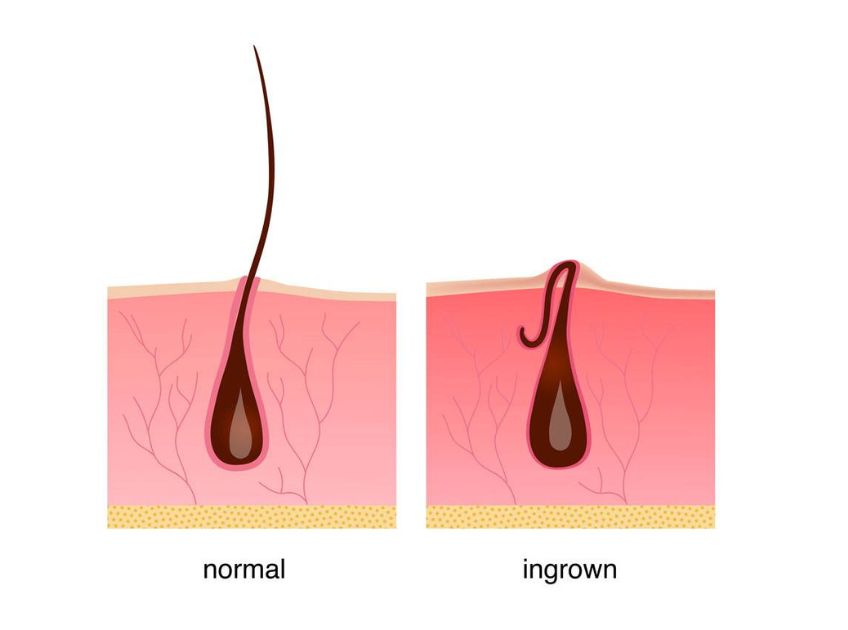
Important: This article is for informational purposes only. Please read our full disclaimer for more details.
Ingrown hairs occur when shaved or waxed hair curls back into the skin instead of growing outward. In the pubic region, where hair is coarse and curly, this problem is particularly common. The result? Small red bumps, itching, discomfort, and sometimes even pain. While not usually dangerous, ingrown hairs can be frustrating and affect skin confidence.
Gentle Home Scrubs & Remedies to Treat Ingrown Hairs
Exfoliating scrubs can prevent and treat ingrown hairs by removing dead skin cells and freeing trapped hair. Here are some safe, natural options for the delicate pubic area:
1. Sugar and Olive Oil Scrub
- Why it works: Sugar crystals act as a natural exfoliant, removing dead skin cells that trap hair beneath the surface (1). Olive oil is rich in vitamin E and fatty acids that soften skin, reducing friction and irritation.
- How to prepare: Mix 2 tbsp fine sugar with 1 tbsp olive oil.
- How to use: Gently massage onto damp skin in small circular motions for 2–3 minutes. Rinse with lukewarm water and pat dry.
- Pro tip: Use fine sugar (not coarse) to avoid microtears on delicate skin.
2. Oatmeal and Yogurt Paste
- Why it works: Oatmeal calms redness and itching thanks to its anti-inflammatory compounds (avenanthramides), while yogurt’s lactic acid gently exfoliates and unclogs pores.
- How to prepare: Grind 2 tbsp oatmeal into powder, mix with 2 tbsp plain yogurt.
- How to use: Apply to the affected area as a mask. Massage gently for 2–3 minutes, leave on for 10 minutes, then rinse.
- Pro tip: Refrigerate before use for a cooling, soothing effect if irritation is present.
3. Honey and Brown Sugar Scrub
- Why it works: Honey has natural antibacterial and healing properties that prevent infection, while brown sugar polishes away dead skin without being too abrasive.
- How to prepare: Mix 1 tbsp honey with 1 tbsp brown sugar.
- How to use: Apply the mixture, massage gently for 2 minutes, rinse with warm water.
- Pro tip: Warm the honey slightly before mixing to improve spreadability.
4. Coffee Grounds and Coconut Oil Scrub
- Why it works: Coffee grounds boost circulation and gently exfoliate, while coconut oil hydrates and provides antibacterial protection.
- How to prepare: Mix 1 tbsp coffee grounds with 1 tbsp coconut oil.
- How to use: Massage into the pubic area for 2–3 minutes, rinse thoroughly.
- Pro tip: Use once a week only, as coffee can be slightly coarse.
5. Baking Soda & Aloe Vera Spot Treatment
- Why it works: Baking soda has mild anti-inflammatory properties that calm redness and itching, while aloe vera soothes irritation and promotes healing.
- How to prepare: Mix 1 tsp baking soda with 1 tsp fresh aloe vera gel to make a paste.
- How to use: Apply directly to ingrown hair spots for 5–10 minutes, rinse gently.
- Pro tip: Use this as a spot treatment only, not an all-over scrub, to avoid over-drying the skin.
Scientific Note
A 2019 review in Clinical, Cosmetic and Investigational Dermatology emphasized that gentle exfoliation, combined with moisturization, is one of the most effective at-home methods for reducing pseudofolliculitis (ingrown hairs), especially in sensitive areas like the pubic region (2).
What Not to Do with Ingrown Pubic Hairs
- Don’t dig with tweezers or needles – this increases infection risk.
- Don’t scratch or pick, as it can worsen inflammation.
- Avoid harsh scrubs or strong acids that may burn delicate skin.
- Skip tight clothing that increases friction and irritation.
What If an Ingrown Hair Gets Infected?
Sometimes, bacteria can enter through irritated skin, causing redness, swelling, pus, or even a painful boil. An infected ingrown hair may need:
- Warm compresses to reduce pain and swelling.
- Topical antibiotic creams are prescribed by a doctor.
- In severe cases, minor surgical drainage is required.
📌 According to the American Academy of Dermatology, infected ingrown hairs should not be self-extracted, as this can worsen scarring and spread infection (3).
Common Causes of Ingrown Pubic Hairs
- Shaving against the grain (opposite hair growth direction).
- Tight clothing causes friction.
- Coarse or curly hair texture (more likely to curl back).
- Clogged pores or dead skin buildup.
- Waxing or epilating without proper aftercare.
When to Seek Professional Help
You should consult a dermatologist if:
- Ingrown hairs keep recurring despite care.
- Bumps become painful, swollen, or filled with pus.
- You notice a spreading infection.
- Scarring or dark spots develop.
Scientific Insights on Ingrown Hair Care
- Exfoliation with lactic acid (yogurt, milk-based scrubs) promotes cell turnover.
- Moisturizers containing aloe vera or glycerin reduce inflammation.
- Salicylic acid or glycolic acid (found in dermatology-approved products) helps unclog pores and release trapped hair (4)(5).
Frequently Asked Questions (FAQ’S)
Q1: Can I use scrubs daily on my pubic area?
A. No. Over-exfoliation can irritate delicate skin. Stick to 2–3 times a week.
Q2: Do chemical exfoliants work better than natural scrubs?
A. Yes, dermatology-grade exfoliants like salicylic acid can be more effective, but natural scrubs are safer for sensitive skin.
Q3: Is laser hair removal a solution for frequent ingrown hairs?
A. Yes. Laser reduces hair growth over time, lowering the chances of ingrown hairs significantly.
Final Thoughts
Ingrown hairs in the pubic area are common but manageable. With gentle scrubs, proper shaving techniques, and good hygiene, you can minimize discomfort and prevent future flare-ups. For severe or infected cases, always seek professional advice.
